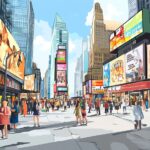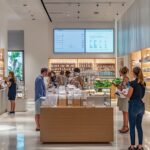Foot traffic data has become a crucial component in how theme parks enhance the visitor experience and optimize their attractions. By analyzing patterns in guest movement, parks can make informed decisions regarding ride placement and overall layout. This discussion will cover the methods and technologies that theme parks use to collect foot traffic data, the factors considered when determining ideal ride locations, the benefits of utilizing this data, and the challenges that accompany it. Discover how these insights contribute to increased efficiency and customer satisfaction in the world of amusement parks.
Explanation of Foot Traffic Data and its Importance in Theme Parks
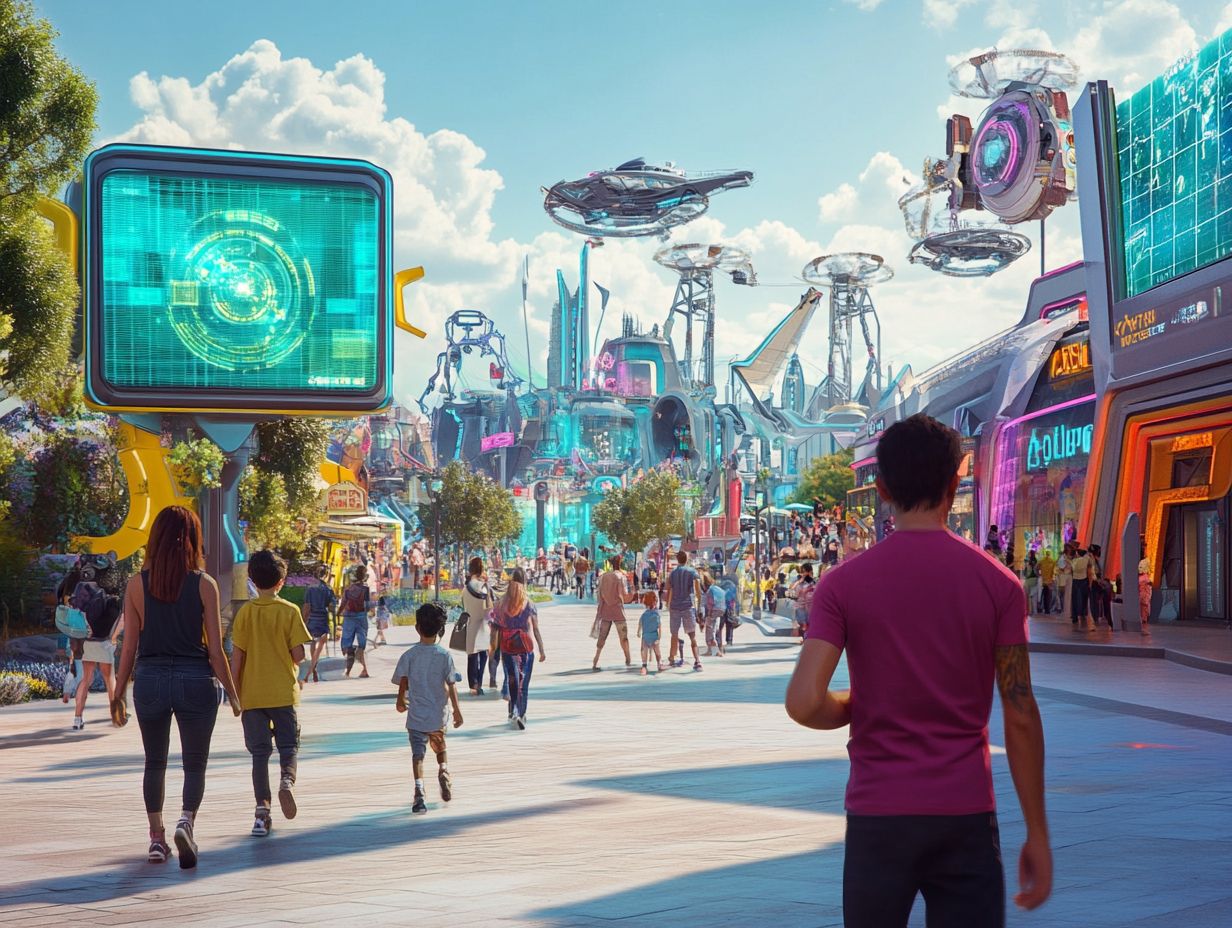
Foot traffic data offers crucial insights for theme parks, enabling management to understand visitor preferences and behaviors while enhancing the overall guest experience. By analyzing visitor flow patterns, parks can optimize their layout, improve operational efficiency, and manage crowds through real-time tracking, geolocation technology, and monitoring of visitor movements. These technologies are pivotal for data-driven decisions and operational strategy.
A comprehensive understanding of foot traffic contributes to a better appreciation of visitor demographics and helps forecast seasonal trends. This ultimately aids in positioning attractions according to ride accessibility and visitor needs. In an ever-changing environment, effective monitoring of visitor analytics is essential for strategic planning and traffic flow optimization.
Along with analyzing visitor behavior, foot traffic data supports staffing decisions and ride optimization. By combining this data with ride popularity metrics and digital mapping tools, parks can identify peak times for specific attractions, thus improving wait time estimates and enhancing operational efficiency.
Furthermore, this data can be utilized to evaluate attraction performance and operation efficiency, allowing management to identify underperforming rides compared to similar attractions. This insight enables them to rebrand or revamp experiences to attract more visitors, enhancing guest engagement and satisfaction.
Additionally, analytics can enhance indirect marketing initiatives aimed at fostering customer loyalty. For instance, data-driven assessments of behavioral differences between first-time and repeat visitors can inform targeted marketing strategies tailored to the specific wants and needs of each segment.
How Theme Parks Collect and Utilize Foot Traffic Data
Theme parks utilize a variety of methods and technologies, including location tracking and interactive maps, to enhance data collection on foot traffic, emphasizing data optimization and the use of operational data to gain deeper insights into visitor behavior and customer journey.
Standard practices include the use of location intelligence, visitor mapping, and tracking devices. By leveraging advanced technologies like mobile app integration and spatial data, parks can gather data on visitor flows and interactions, providing a clearer understanding of visitor preferences and activities, which enhances guest routing and park design.
This information enables more precise resource allocation, strategic planning, and improves overall park operations, contributing to revenue management and layout optimization.
Methods and Technologies Used
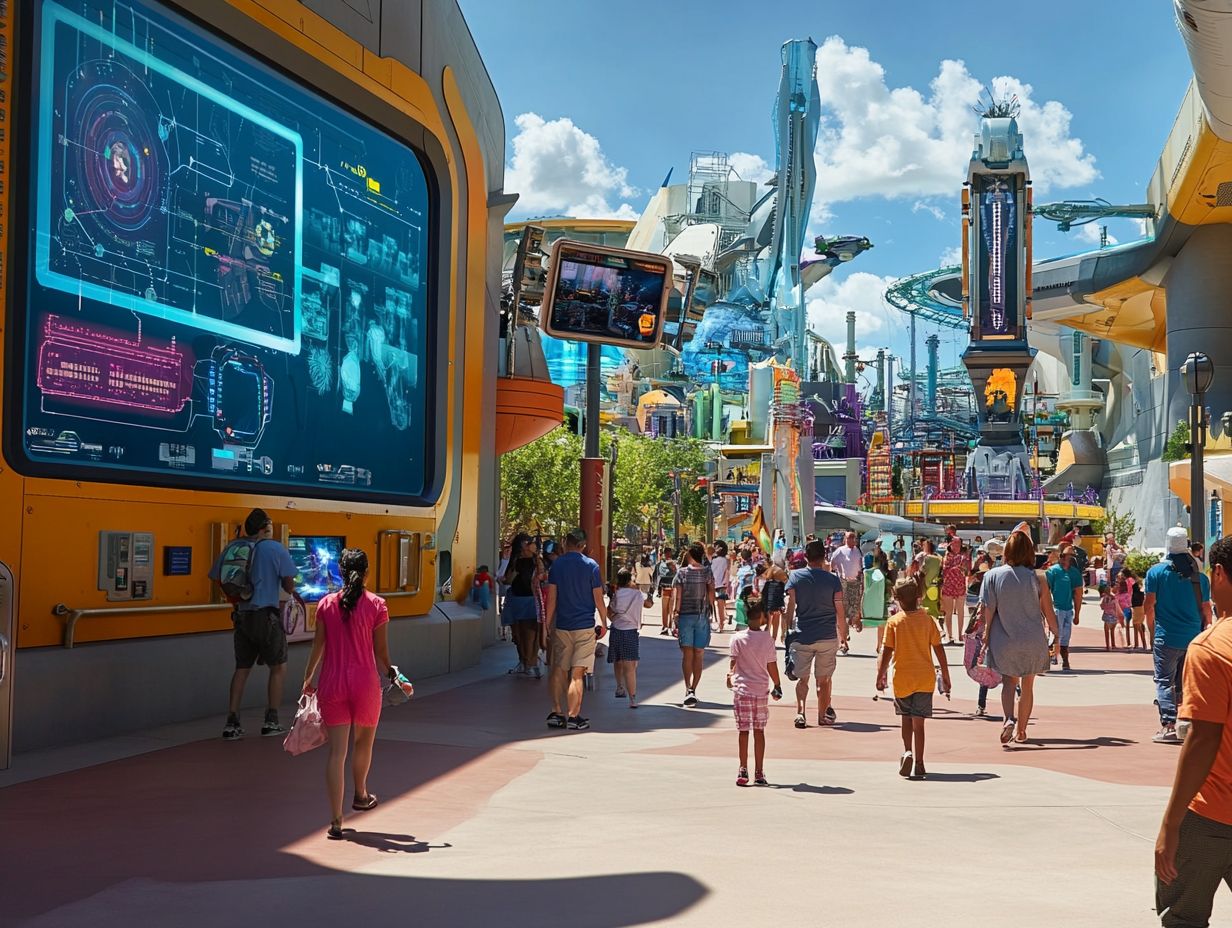
Theme parks employ various methods and technologies to monitor real-time on-the-ground data regarding foot traffic, including heat maps and behavioral mapping technologies. These techniques enable parks to visualize visitor patterns, such as identifying which rides receive the most traffic and how visitor flow changes over time.
Tracking technology, such as mobile applications and RFID wristbands, plays a crucial role in collecting comprehensive information about guest preferences and their interactions with the park. This data is then utilized to inform operational strategies that can enhance ride throughput and even influence the design of the park itself.
Many parks also use advanced analytics platforms to interpret the collected data, transforming it into actionable insights. For instance, dynamic queue management systems can adjust wait times and modify ride operations based on real-time flow patterns.
Additionally, integration with digital signage provides visitors with up-to-date information about congested areas and wait times, allowing them to make informed decisions about how to spend their time.
By understanding foot traffic, parks can optimize staffing schedules, prevent overcrowding during peak times, and enhance overall engagement, which leads to greater guest satisfaction and improved operational KPIs.
Utilizing Foot Traffic Data for Ride Placement and Park Optimization
Foot traffic data is utilized to determine the optimal placement of rides within theme parks, as it significantly impacts visitor traffic, attraction distribution, and overall guest satisfaction, harnessing the power of park analytics and spatial analysis.
By understanding visitor demographics and tracking ride popularity, parks can strategically position rides in areas where they will be most frequently used, thereby reducing wait times. This data is essential for assessing and gaining insights into traffic patterns, ride availability, and improving ride efficiency.
When combined with other data types, it enables parks to manage the operational flow of their layout more effectively, leading to improved customer behavior and increased revenue generation.
Factors Considered for Optimal Ride Locations
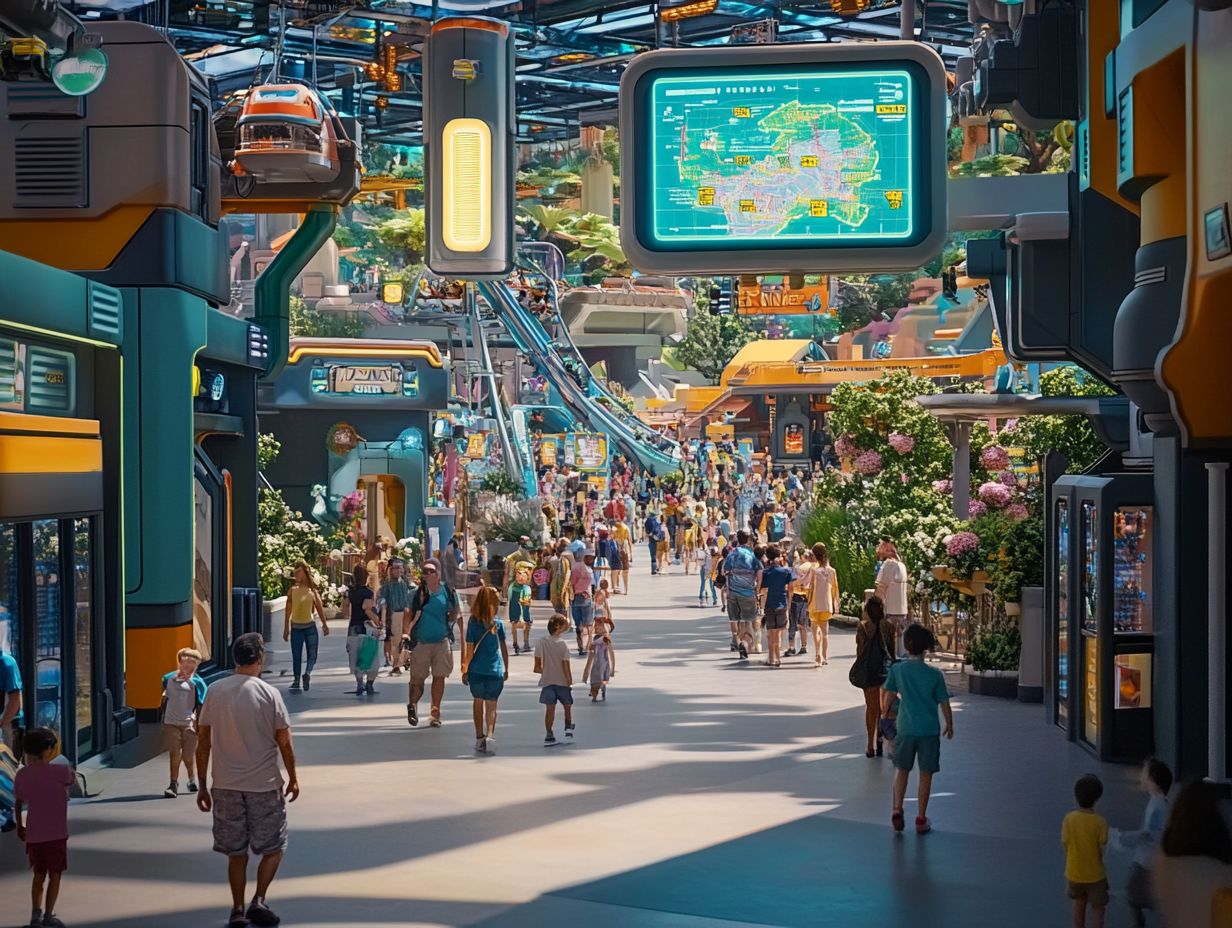
The optimal placement of rides in a theme park is influenced by factors such as crowd control, ride density, operational efficiency, and entertainment optimization.
By analyzing historical wait times and customer movements, a park can adjust its design to enhance the customer experience and reduce crowding. The strategic placement of rides significantly impacts visitor flow, engagement metrics, and overall guest satisfaction during their time in the park.
For instance, rides with similar intensity or themes are often situated close to each other, ensuring that guests who enjoy one ride are likely to try others nearby. Additionally, theme parks design pathways to accommodate families with strollers and individuals with mobility challenges.
The aesthetics of ride placement are also crucial, as rides that are visible from various locations tend to attract more interest. Dining and resting areas are typically located nearby, providing guests with an opportunity to recharge before heading to their next attraction, which helps create a welcoming atmosphere.
Benefits of Using Foot Traffic Data for Theme Parks
Leveraging foot traffic data in theme parks offers several advantages, including improved operational efficiency, enhanced customer experience, increased visitor retention, higher revenue generation, better crowd management, and optimized guest flow.
Operational Efficiency: By analyzing visitor interactions and preferences, parks can implement experience improvements that enhance operational efficiency, leading to increased visitor retention and revenue generation.
Customer Experience: Parks can utilize crowd management strategies informed by data insights to minimize wait times and boost engagement metrics. This approach contributes to a more enjoyable experience for guests, making their day at the park more satisfying.
Increased Efficiency and Customer Satisfaction
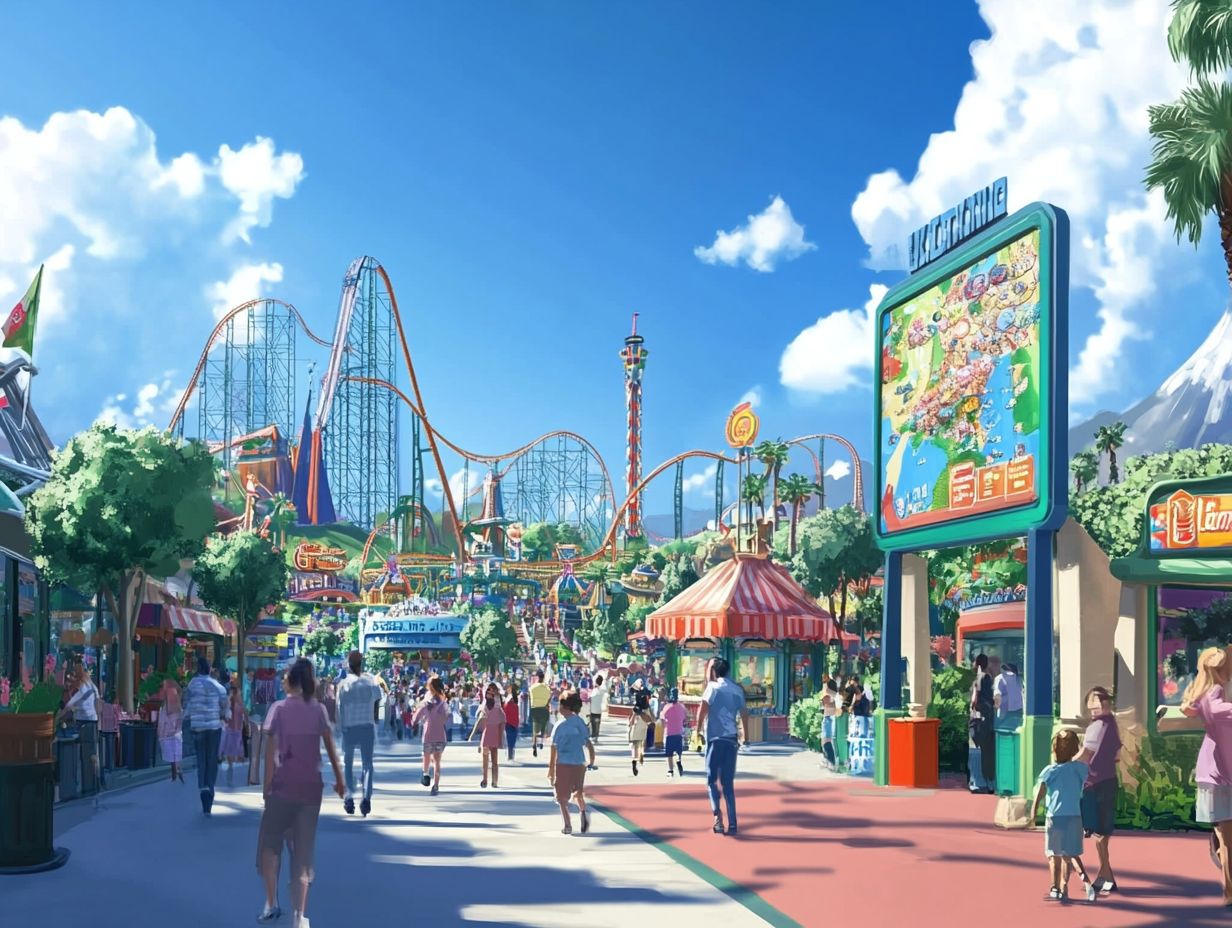
Theme park foot traffic data enhances efficiency and customer satisfaction by providing valuable operational insights and improving guest flow. By analyzing this data, theme parks can identify wait times and visitor spending patterns, allowing them to personalize the guest experience according to individual preferences. This personalization ultimately leads to visits that guests are eager to repeat.
The primary objective of utilizing foot traffic data to improve operational efficiency is to create a positive experience for visitors. This includes reducing the time and stress associated with queuing and increasing enjoyment through experiences that align with individual preferences. As a result, this approach enhances the park’s efficiency, boosts consumer spending, and fosters brand loyalty.
An example of how theme park foot traffic data can increase efficiency and customer satisfaction is by determining peak times for popular attractions. With this information, parks can implement strategies such as virtual queues or timed entry systems, significantly reducing wait times and frustration.
By integrating foot traffic data with customer profiles and utilizing business intelligence, parks can also offer targeted promotions or experiences that cater to visitor interests, such as special events for families or thrill-seekers, thus optimizing audience targeting and experience enhancement.
This proactive approach not only improves efficiency but also elevates the overall experience, fostering a deeper emotional connection and satisfaction among guests. Ultimately, this leads to positive word-of-mouth and encourages repeat visits.
Challenges and Limitations of Foot Traffic Data in Theme Parks and the Entertainment Industry
Foot traffic data for theme parks and the broader entertainment industry presents several challenges and limitations, including inaccuracies in the data and the inherent limitations of technology, such as incomplete visitor segmentation and difficulties in predictive analysis, which impact decision making and operational strategy.
These challenges can adversely affect decision-making processes. If these issues are not addressed, theme parks may struggle to fully utilize foot traffic data, which is essential for ensuring successful operations and enhancing visitor experiences.
Potential Issues and Solutions
Potential issues related to foot traffic data include limitations and inaccuracies that can undermine the effectiveness of operational strategies. Implementing advanced tracking technology and enhancing the analysis of crowd dynamics can help minimize errors and provide valuable insights about visitors.
If these challenges are not addressed, they can lead to scenarios where data-driven decision-making fails to positively impact guest experiences or overall park performance. For instance, inaccurate measurements of foot traffic can result in overcrowding, negatively affecting the experience for many visitors and raising safety concerns.
To counteract this, real-time data analytics technology can supply parks with immediate information about foot traffic behavior and visitor patterns, enabling them to respond quickly by adjusting staffing levels and managing attractions more effectively. By using foot traffic data and geolocation technology, parks can optimize ride locations and crowd management for better operational efficiency.
A combination of advanced data analytics, including data analytics and direct customer feedback mechanisms, will provide the necessary insights to understand how foot traffic behaviors influence guest experiences, as well as strategies to maintain or improve these behaviors. This includes adjusting the locations of attractions, such as ride placement and dining areas, and zones based on foot traffic patterns. Additionally, using tools like heat maps and digital mapping can significantly aid in strategic decision making.
Ultimately, this approach to foot traffic management can enhance operational efficiency for parks while also fostering guest loyalty. Visitors are more likely to return to parks where they feel comfortable and entertained. By incorporating operational metrics and predictive modeling, parks can optimize guest flow and experience design, ensuring high levels of guest satisfaction and retention.

